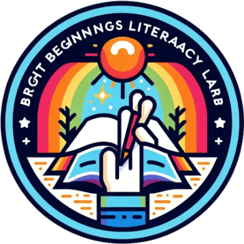Reading Recovery
Reading Recovery is an early literacy intervention program designed to help the lowest achieving first-grade students improve their reading and writing skills. Here is a brief history of its development:
Origins and Development:
1970s: The program was developed by Dr. Marie M. Clay, a New Zealand educator and researcher. Clay's work focused on the behaviors of young readers and the challenges faced by struggling readers.
1981: Reading Recovery was officially launched in New Zealand after a series of pilot studies and extensive research. Clay's approach emphasized individualized instruction tailored to each student's specific needs.
Expansion and Implementation
1984: The program was introduced in Australia. Its success in New Zealand and Australia began to draw international attention.
1984-1985: Reading Recovery was piloted in the United States in Columbus, Ohio, through Ohio State University, under the guidance of Dr. Gay Su Pinnell.
1988: The program expanded to Canada and the United Kingdom. It was adapted to suit the different educational contexts of each country.
Key Features
Individualized Instruction: Students receive one-on-one lessons with a specially trained Reading Recovery teacher for 30 minutes each day over a period of 12-20 weeks.
Comprehensive Assessment: The program begins with a detailed diagnostic assessment to identify each child's specific needs.
Professional Development: Teachers undergo rigorous training and ongoing professional development to ensure high-quality instruction.
Research and Effectiveness
1990s-Present: Numerous studies have been conducted to evaluate the effectiveness of Reading Recovery. Research consistently shows positive outcomes, including accelerated reading progress and long-term academic benefits for participating students.
Controversies: Despite its successes, Reading Recovery has faced criticism regarding its cost and scalability. Some educators argue that the program is expensive due to its one-on-one nature and the extensive training required for teachers.
Global Reach
2000s: Reading Recovery continued to spread globally, with implementations in Ireland, Hong Kong, and various other countries.
2010s-Present: The program has adapted to incorporate new technologies and methodologies, ensuring it remains relevant in modern educational contexts.
Reading Recovery remains a widely respected and utilized early intervention program, known for its tailored approach and commitment to improving literacy outcomes for the most at-risk young readers.


Bright Beginners Literacy Lab
26 Deerness Heights
Brandon
Durham
DH7 8TQ
Proprietor.
Mrs Carol Ford BA., Dip.Ed., Reading Recovery
Enhanced DBS
Email: info@bright-beginners.com
PH: +44 7511589388
